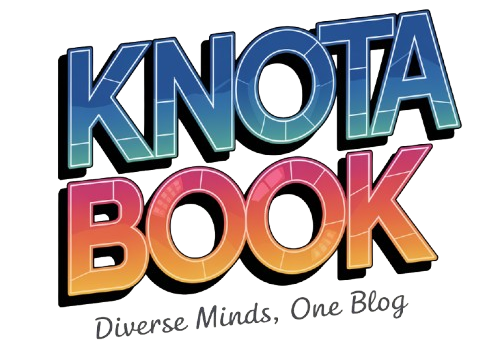Misclassification in various sectors, particularly in employment and taxation, can have profound implications for both individuals and organizations. When employees are incorrectly classified as independent contractors, for instance, it can lead to significant financial repercussions. Employers may face penalties from regulatory bodies, while misclassified workers may miss out on essential benefits such as health insurance, retirement plans, and unemployment compensation.
The ramifications extend beyond immediate financial concerns; they can also affect workplace morale and trust. Employees who feel undervalued or misrepresented may become disengaged, leading to decreased productivity and higher turnover rates. Moreover, the impact of misclassification is not limited to the workplace.
It can ripple through the economy, affecting tax revenues and social security systems. When workers are misclassified, it often results in lower tax contributions, which can strain public resources. This misalignment can lead to a cycle of underfunded services that ultimately affects the community at large.
Understanding these implications is crucial for organizations aiming to maintain compliance and foster a fair working environment. By recognizing the broader consequences of misclassification, businesses can take proactive steps to mitigate risks and ensure that their classification practices align with legal standards.
Key Takeaways
- Misclassification can have a significant impact on business operations and decision-making.
- Common misclassification errors include misunderstanding job duties, misinterpreting legal requirements, and overlooking changes in employee status.
- Effective training programs should focus on educating employees about classification criteria, legal requirements, and potential consequences of misclassification.
- Real-life case studies can provide practical examples and help employees understand the impact of misclassification in a tangible way.
- Technology can be utilized to improve accuracy in classification processes and reduce the likelihood of errors.
Identifying Common Misclassification Errors
Identifying common misclassification errors is essential for organizations seeking to avoid the pitfalls associated with incorrect employee classification. One prevalent error occurs when employers classify employees as independent contractors without fully understanding the legal criteria that differentiate the two. The IRS provides specific guidelines that outline the degree of control an employer has over a worker’s tasks, which is a critical factor in determining classification.
For example, if an employer dictates how a worker should perform their job or provides them with tools and resources, this may indicate an employer-employee relationship rather than an independent contractor arrangement. Another frequent misclassification error involves the treatment of interns and trainees. Many organizations mistakenly classify interns as unpaid volunteers when they should be compensated for their work.
Failing to adhere to these guidelines not only exposes organizations to legal risks but also undermines the value of internships as a legitimate pathway for career development. By recognizing these common errors, organizations can implement more robust classification processes that align with legal requirements.
Implementing Effective Training Programs

Implementing effective training programs is vital for organizations aiming to reduce misclassification errors. A well-structured training program should begin with a comprehensive overview of classification laws and regulations. This foundational knowledge equips employees responsible for hiring and classification decisions with the necessary tools to make informed choices.
Training sessions should cover key topics such as the differences between independent contractors and employees, the implications of misclassification, and best practices for ensuring compliance with labor laws. In addition to foundational training, organizations should consider incorporating scenario-based learning into their programs. By presenting real-world examples of misclassification cases, employees can better understand the nuances of classification decisions.
For instance, role-playing exercises can simulate hiring scenarios where participants must determine the appropriate classification based on specific criteria. This interactive approach not only enhances engagement but also reinforces learning by allowing employees to apply their knowledge in practical situations. Regularly updating training materials to reflect changes in legislation or industry standards is also crucial for maintaining relevance and effectiveness.
Utilizing Real-life Case Studies for Training
| Case Study | Training Topic | Learning Outcome |
|---|---|---|
| Customer Service Scenario | Effective Communication | Improved customer satisfaction |
| Project Management Challenge | Problem-solving skills | Enhanced decision-making abilities |
| Sales Pitch Simulation | Negotiation techniques | Increased sales effectiveness |
Utilizing real-life case studies in training programs can significantly enhance understanding and retention of classification concepts among employees. Case studies provide concrete examples of how misclassification can occur and the consequences that follow. For instance, examining a case where a company faced legal action due to misclassifying its delivery drivers as independent contractors can illustrate the potential financial and reputational damage that can result from such errors.
By analyzing these cases, employees can gain insights into the complexities of classification decisions and learn from the mistakes of others. Moreover, case studies can foster critical thinking and discussion among training participants. When employees are presented with a real-world scenario, they can engage in group discussions to explore different perspectives and potential solutions.
This collaborative approach not only deepens understanding but also encourages employees to think critically about their own classification practices. Incorporating diverse case studies from various industries can further enrich training programs by highlighting the unique challenges faced by different sectors in navigating classification issues.
Incorporating Technology for Improved Accuracy
Incorporating technology into classification processes can significantly improve accuracy and reduce the likelihood of misclassification errors. Various software solutions are available that assist organizations in tracking employee classifications and ensuring compliance with labor laws. For example, Human Resource Information Systems (HRIS) can automate classification processes by providing templates and checklists that guide HR professionals through the decision-making process.
These tools can help ensure that all relevant factors are considered when classifying workers, reducing the risk of oversight. Additionally, machine learning algorithms can analyze historical data to identify patterns in classification decisions. By examining past classifications alongside outcomes such as audits or legal challenges, organizations can gain valuable insights into their classification practices.
This data-driven approach allows companies to refine their processes continually and make informed adjustments based on empirical evidence rather than anecdotal experiences. As technology continues to evolve, organizations must stay abreast of new tools that can enhance their classification accuracy and compliance efforts.
Providing Ongoing Education and Support

Providing ongoing education and support is essential for maintaining compliance with classification laws over time. Classification is not a one-time decision; it requires continuous monitoring and adjustment as roles evolve within an organization. Regular workshops or refresher courses can help keep employees informed about changes in legislation or best practices related to worker classification.
These sessions should encourage open dialogue about challenges faced in classification decisions and provide a platform for sharing experiences and solutions. In addition to formal training sessions, organizations should establish channels for ongoing support where employees can seek guidance on classification issues as they arise. This could include creating a dedicated resource center with access to legal experts or HR professionals who specialize in classification matters.
By fostering an environment where employees feel comfortable seeking assistance, organizations can mitigate risks associated with misclassification and promote a culture of compliance.
Collaborating with Industry Experts for Training
Collaborating with industry experts for training programs can significantly enhance the quality and effectiveness of employee education on classification issues. Experts bring a wealth of knowledge and experience that can provide valuable insights into complex legal frameworks governing worker classification. By partnering with legal professionals or consultants who specialize in labor law, organizations can ensure that their training materials are accurate and up-to-date with current regulations.
For example, a company in the gig economy may require specialized training on classifying gig workers versus traditional employees due to the distinct nature of their work arrangements. By leveraging expert knowledge, organizations can create targeted training programs that resonate with their workforce and address real-world challenges effectively.
Evaluating the Effectiveness of Training Programs
Evaluating the effectiveness of training programs is crucial for ensuring that employees are equipped with the knowledge necessary to make informed classification decisions. Organizations should establish clear metrics for assessing training outcomes, such as pre- and post-training assessments that measure knowledge retention and understanding of classification concepts. Surveys or feedback forms can also provide insights into participants’ perceptions of the training’s relevance and applicability to their roles.
Additionally, organizations should monitor classification decisions made by employees after completing training programs to identify any lingering issues or areas for improvement. Analyzing trends in misclassification incidents before and after training implementation can provide valuable data on the program’s impact. Continuous evaluation allows organizations to refine their training initiatives over time, ensuring they remain effective in addressing the evolving landscape of worker classification laws and practices.
By focusing on these critical areas—understanding the impact of misclassification, identifying common errors, implementing effective training programs, utilizing real-life case studies, incorporating technology, providing ongoing education, collaborating with experts, and evaluating effectiveness—organizations can create a robust framework for minimizing misclassification risks while fostering a compliant and equitable workplace environment.
FAQs
What is misclassification in the context of training education?
Misclassification in the context of training education refers to the incorrect categorization of employees or workers as independent contractors. This misclassification can have legal and financial implications for both the employer and the worker.
What are the consequences of misclassifying employees in training education?
The consequences of misclassifying employees in training education can include legal penalties, back payment of wages and benefits, and potential damage to the employer’s reputation. Additionally, misclassified workers may miss out on important benefits and protections afforded to employees.
How can employers avoid misclassification in training education?
Employers can avoid misclassification in training education by carefully reviewing the criteria used to classify workers as employees or independent contractors. It is important to understand the legal definitions and guidelines for classification and to seek legal advice if there is uncertainty.
What are the legal guidelines for classifying workers in training education?
The legal guidelines for classifying workers in training education vary by jurisdiction, but generally include factors such as the level of control the employer has over the worker, the worker’s opportunity for profit or loss, and the nature of the working relationship. It is important for employers to familiarize themselves with these guidelines to ensure proper classification.
What should workers do if they believe they have been misclassified in training education?
Workers who believe they have been misclassified in training education should seek legal advice to understand their rights and options. They may be entitled to back payment of wages and benefits, as well as other remedies for the misclassification.

